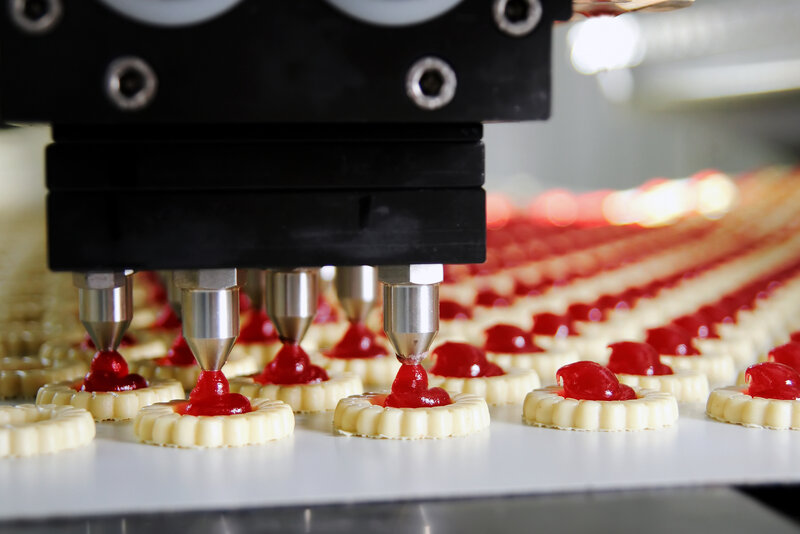When it comes to food production, safety is paramount. Any type of contamination can have serious health consequences for thousands of people all over the world.
Even if it’s not dangerous, just the suggestion that there might be some sort of contamination at the source can be devastating for a brand, destroying customer confidence and wiping millions off a company’s value.
Keeping your production facilities clean and free from rust and corrosion is essential if you wish to stay in business.
What is rust and why is it such a problem?
Rust, or iron oxide, is a chemical reaction that occurs when metal is exposed to oxygen and water.
The reaction between metal, oxygen, and moisture creates an electrochemical process that results in the breakdown of the metal surface, appearing as the reddish-brown or orange-coloured flaky material we recognize as rust.
Rust is particularly common in damp or humid environments where there is plenty of moisture and oxygen present – ideal conditions for the oxidation process to occur. It can also be accelerated by exposure to corrosive substances, such as acids or cleaning chemicals.
As you may have realised, these conditions are quite common in food production facilities, making rust a serious problem for the industry.
When rust forms on food production equipment, it can lead to contamination, resulting in serious health risks for consumers, including food poisoning, infections, and allergic reactions.
Food production facilities have strict health and safety regulations that they must adhere to, and any rust or corrosion on equipment can lead to a violation of these regulations.
In addition to the health issues that contamination could cause, facilities that fail to remove rust and corrosion from their equipment risk facing legal action or being shut down completely.

It’s not only a health and safety issue
Beyond the obvious health and safety risks, there are other reasons why rust and corrosion need to be removed from food production plants.
All equipment will run down over time, but rust will speed up that timeframe, reducing the lifespan of expensive equipment and increasing repair or replacement costs. When machines are down, operational efficiency is down. When equipment is rusted or corroded, it can slow down the production process or cause catastrophic failure, leading to downtime and decreased productivity.
And, of course, food production facilities that fail to address rust and corrosion on their equipment risk damaging their brand reputation. Consumers expect the food they purchase to be safe and of high quality, and any indication that a facility is not taking the necessary precautions to ensure this can lead to negative publicity and loss of consumer trust.
As Fonterra discovered back in 2015, the threat of contamination doesn’t even have to come from the production site, just the idea of food being tainted is enough to make people stop buying it.
Prevent rust and corrosion in food production facilities
Preventing rust and corrosion in food production facilities requires a multi-angled approach, involving regular maintenance and cleaning of equipment, as well as the use of protective coatings and materials.
Prevention is better than cure, so designing a facility from the beginning to use appropriate corrosion-resistant materials and adding barrier protection is the best way to start.
Coating metal surfaces with epoxy or galvanising paint will help prevent rust from forming, while stainless-steel tanks and pipes are also more resistant to the chemical process. It doesn’t have to be special rust-proof paint – even regular paint can create a barrier between the metal surface and the environment, preventing the chemical reaction.
Stainless steel is highly resistant to corrosion and oxidation, making it an ideal choice for use in food production facilities, however, it is important to note that even stainless steel can corrode if exposed to certain chemicals or environments, so regular maintenance and cleaning are still necessary.
Because moisture is a key factor in rust formation, storing equipment in dry, well-ventilated areas can help to prevent rust from forming. Humidity levels should be kept low, ideally below 50%, with dehumidifiers used to regulate humidity levels in areas where equipment is stored or used.

Call us to remove all rust and corrosion from your factory
If you run a food production plant, then you’ll already know about the strict audits you need to pass. Any equipment in your facility needs to be sparkling clean, without the smallest hint of rust or corrosion to be found.
That’s why you need to call in the professionals.
We are specialists in food manufacturers’ audit cleaning, getting rid of rust and corrosion, and keeping you and your business on track.
Keep your food process free from even the hint of contamination, make sure your specialised and expensive machinery is kept in the best possible working condition, and protect your customers, workers and products with our expertise.
Contact us today if you would like to know more about our rust and corrosion removal services or our food audit cleaning.

